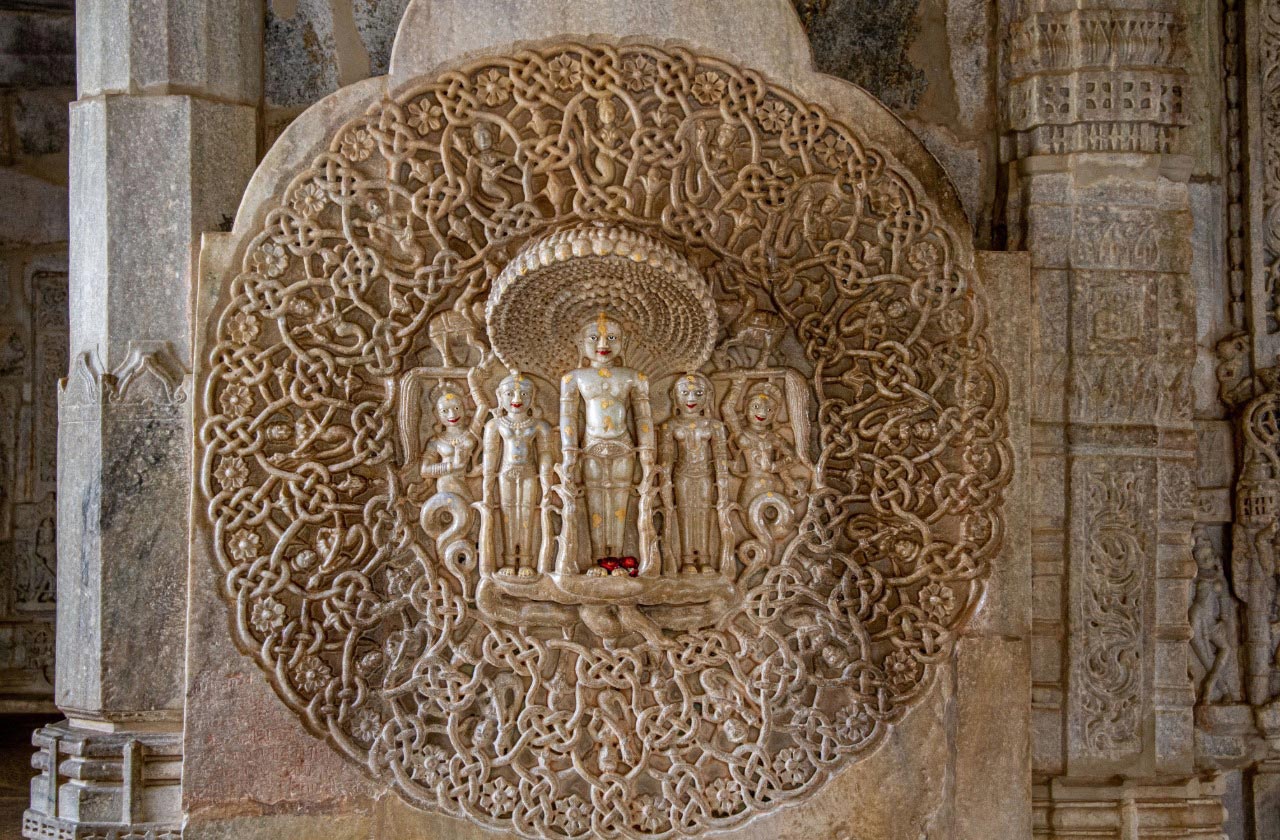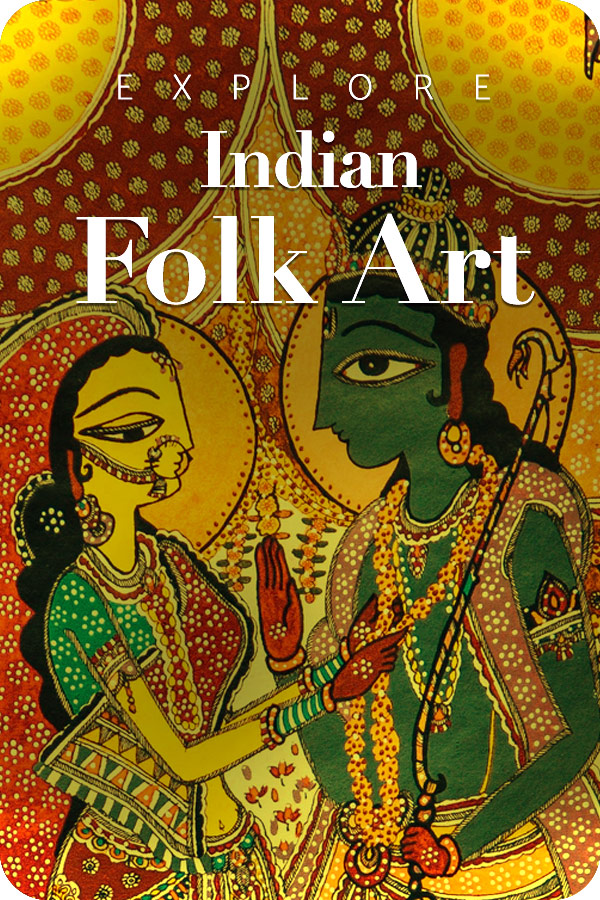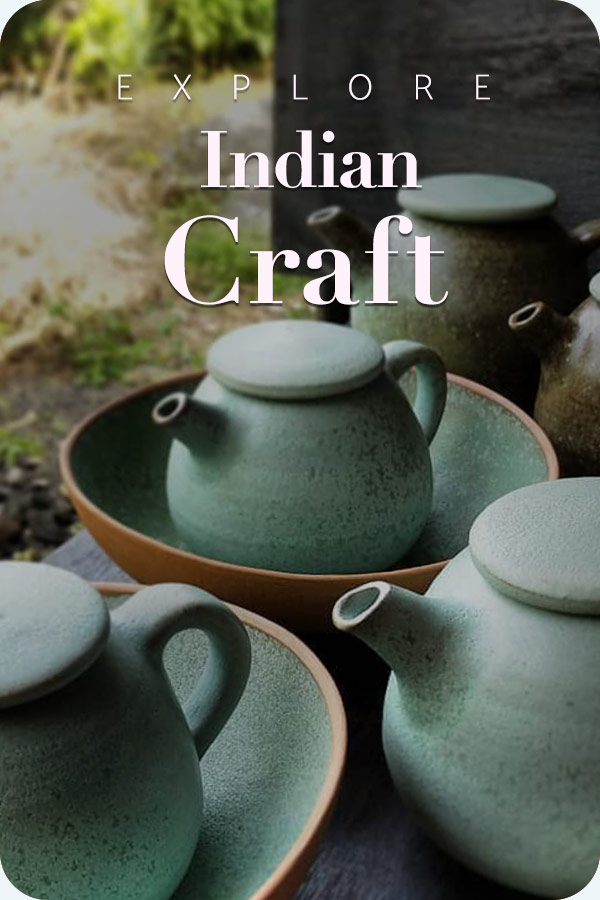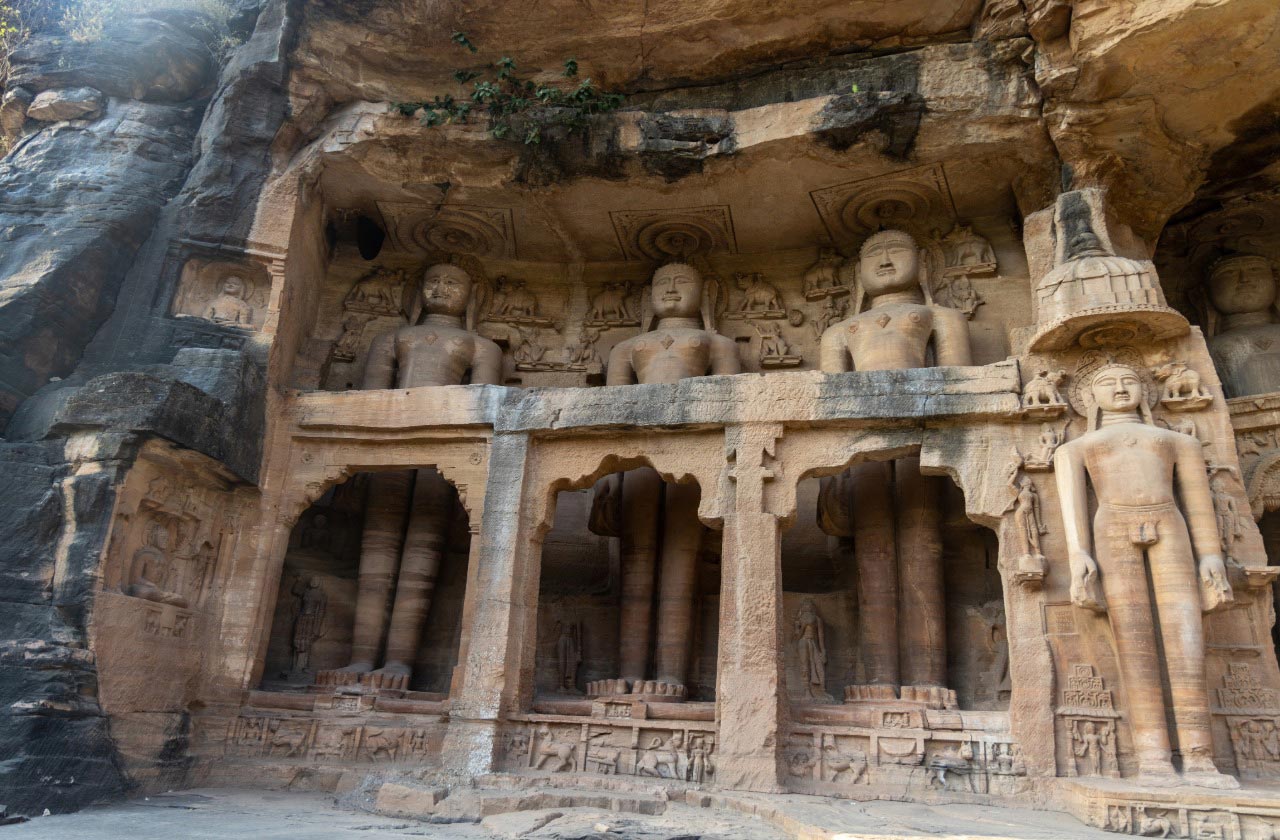
Jainism occupies a unique place among India’s vast spiritual traditions, primarily by its emphasis on ahimsa (non-violence), detachment, and an extreme respect for all forms of life. Jains believe liberation is attained through self-restraint, compassion, and ceasing from over indulgence in the material world. These concepts are not only found in writings and teachings, but also within art, architecture, and visual representation.
Whether manifested in exquisite marble temples, in monolithic statues, in manuscript illustrations, or in philosophical symbols, Jain art represents spiritual discipline expressed in lasting forms of culture. Over hundreds of years Jain art has created the sacred architecture of India and contributed to the aesthetic and pluralistic identity of the Indian subcontinent, and continues to a degree that has not been applied to some other religions of India.
Evolution of Jain Art
Jain art has evolved throughout Indian history. This evolution has been both- a response to the changing cultural practices and trends, as well as, the development and complication of internal cultural premises of the Jain culture.
Rock-cut Caves:
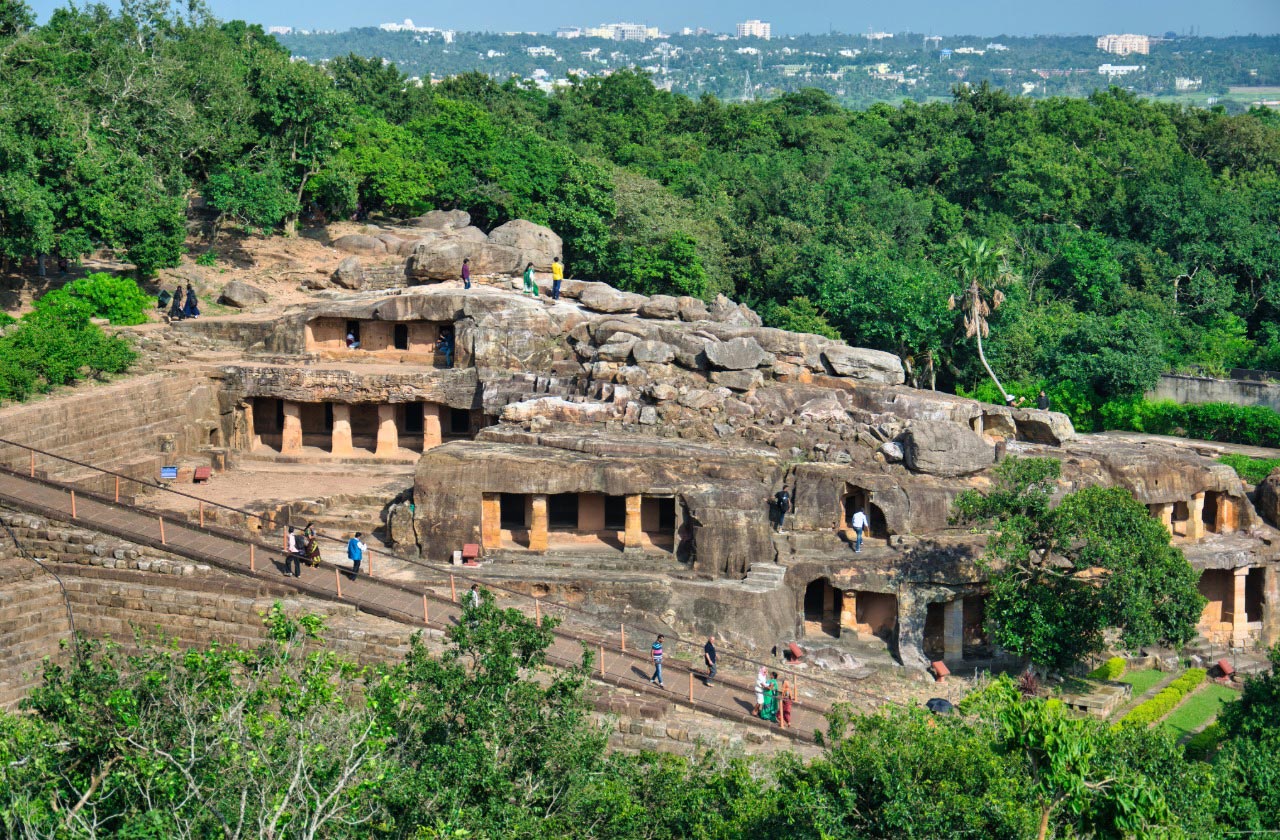
Udayagiri and Khandagiri caves in Odisha (2nd century BC) are among some of the earliest surviving Jain sites. Financed by Kalingan king Kharavela, these rock-cut cave shelters provided sculpture scenes with representations of Jain saints, inscriptions, and supportive paraphernalia reflecting Jain values. Similarly, Ellora in Maharashtra has a series of Jain caves also from a later medieval period, thus documenting Jainism’s co-existence with Buddhism and Hinduism.
Temples in Medieval India:
By the 10th Century, Jains became a powerful force in providing money as patrons of monumental temple construction. Wealthy merchant groups especially in the western regions of India provided support, and the Jains generated a unique architectural style that was intricately assembled, symmetrical, and geometric in design.
Characteristics:
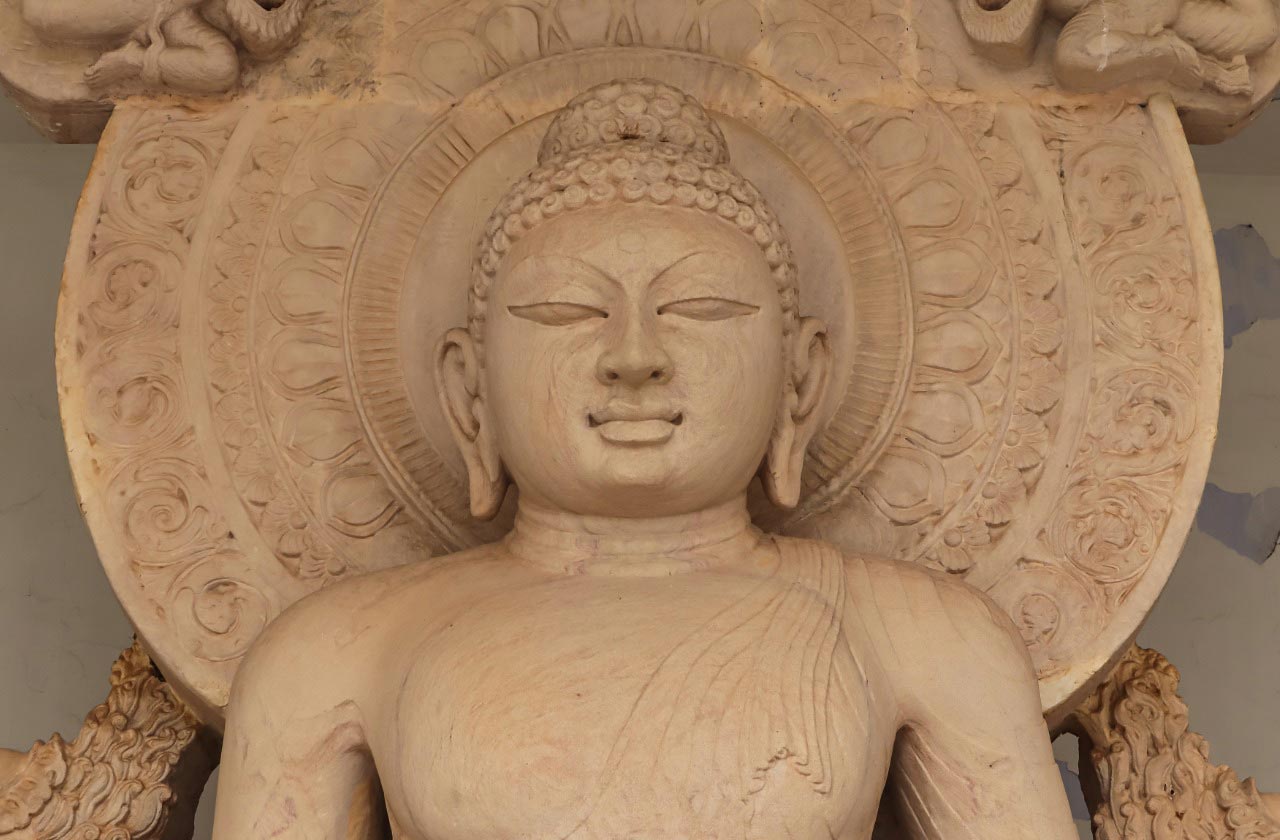
Jain art primarily emphasizes iconography stemming from values in religion: Tirthankaras (spiritual teachers) were depicted in states of passive, serene meditation; lotuses and auspicious symbols represented decor; stories from Jain scriptures were informed by sculpture and painting instead of literature. While other religious traditions emphasized gods revealing their human aspects, Jain Tirthankaras suggest detachment and transcendence; and this serenity escapes the fine lines of the sculptures.
Architectural and sculptural grandeur
The monumental scale and artistry of Jain temples and sculpture testify to the devotion and wealth of part of the Jain community which became communal heritage.
Dilwara Temples, Mount Abu:
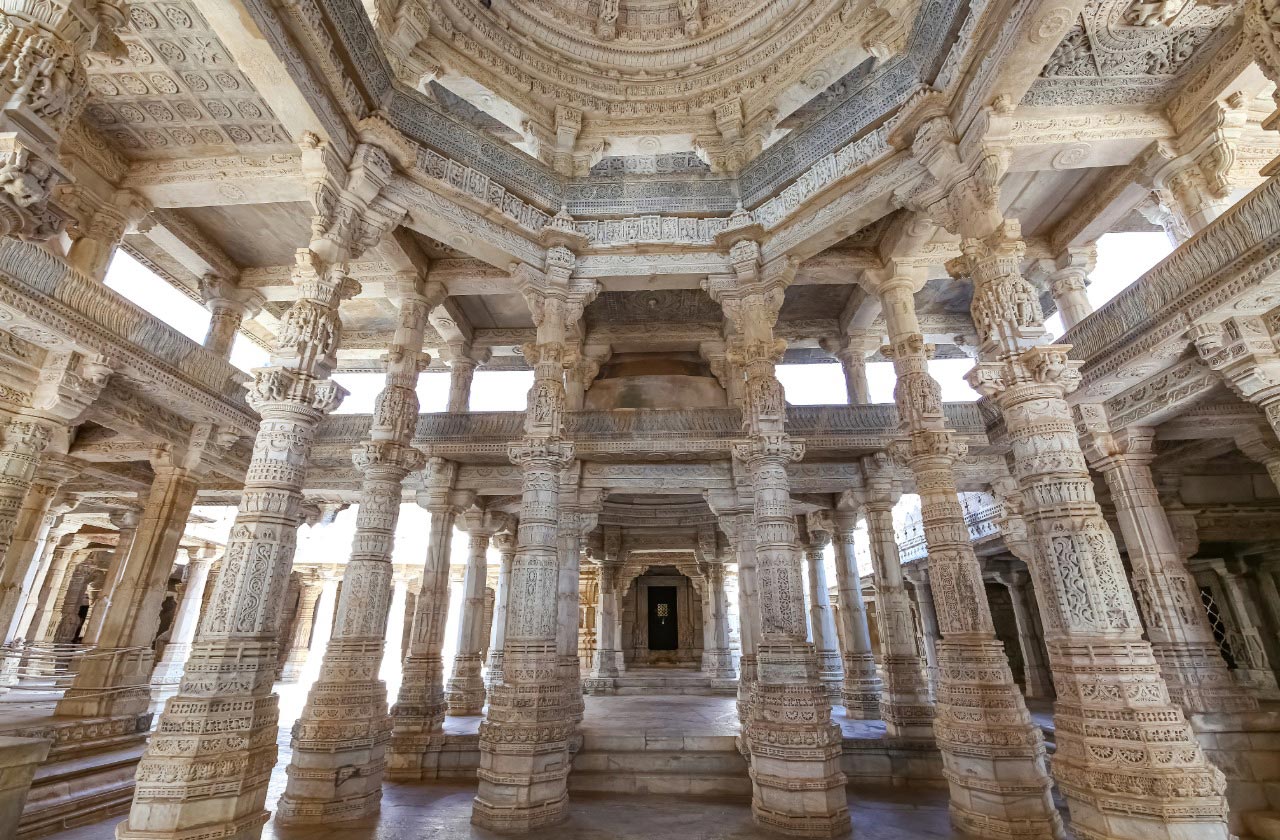
The group of temples at Mount Abu went through construction between the 11th to 13th centuries, and especially known for marble carvings which are so delicate they appear like lace. The ceilings are entirely designed with concentric circles formed by dancers, flowers, and mythological symbols, and really identified Dilwara, with the other temples not coming close in achievement as a pinnacle of Jain Art.
Ranakpur Temple, Rajasthan:
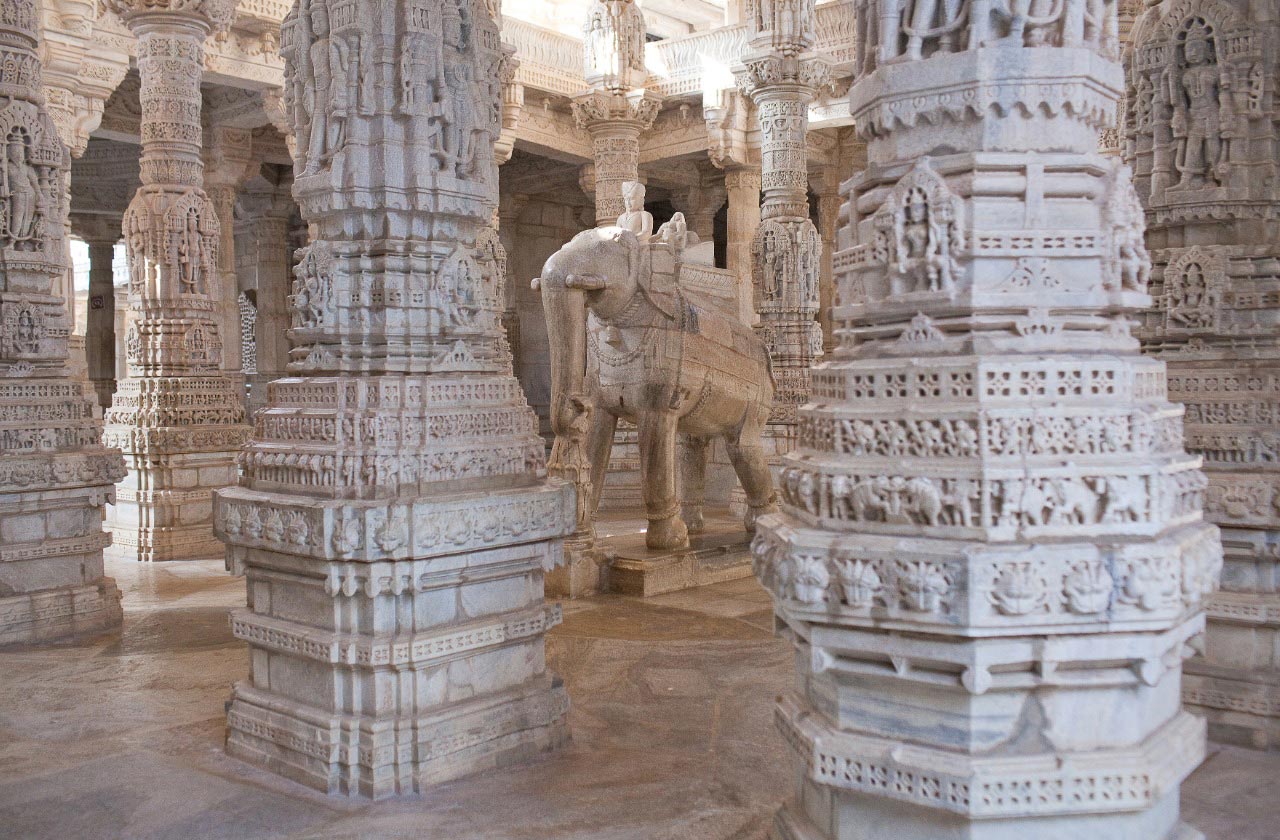
The temple was built in the fifteenth century. The temple has a unique 1,444 marble pillars each having separate carvings. The thousand pillars of the temple are set up in such a way that when standing at any point, you can see the central shrine with no pillars in between you.
Shravanabelagola, Karnataka:

The Shravanabelagola temple is known for its giant statue. The statue is that of Bahubali (Gommateshwara) which is carved from a single granite stone. The statue rises to a height of 57 feet and was built in the tenth century. The statue shows Bahubali meditating in his desire for liberation, and the idea that he is still can be witnessed through the creepers growing up his small body. Every twelve years, the Mahamatebthrisheba festival takes place, bringing thousands of devotees to the shrine, which consists of bathing the statue in milk, saffron, and sandalwood paste, forever tying religion with art.
Ellora and Badami Jain Caves:
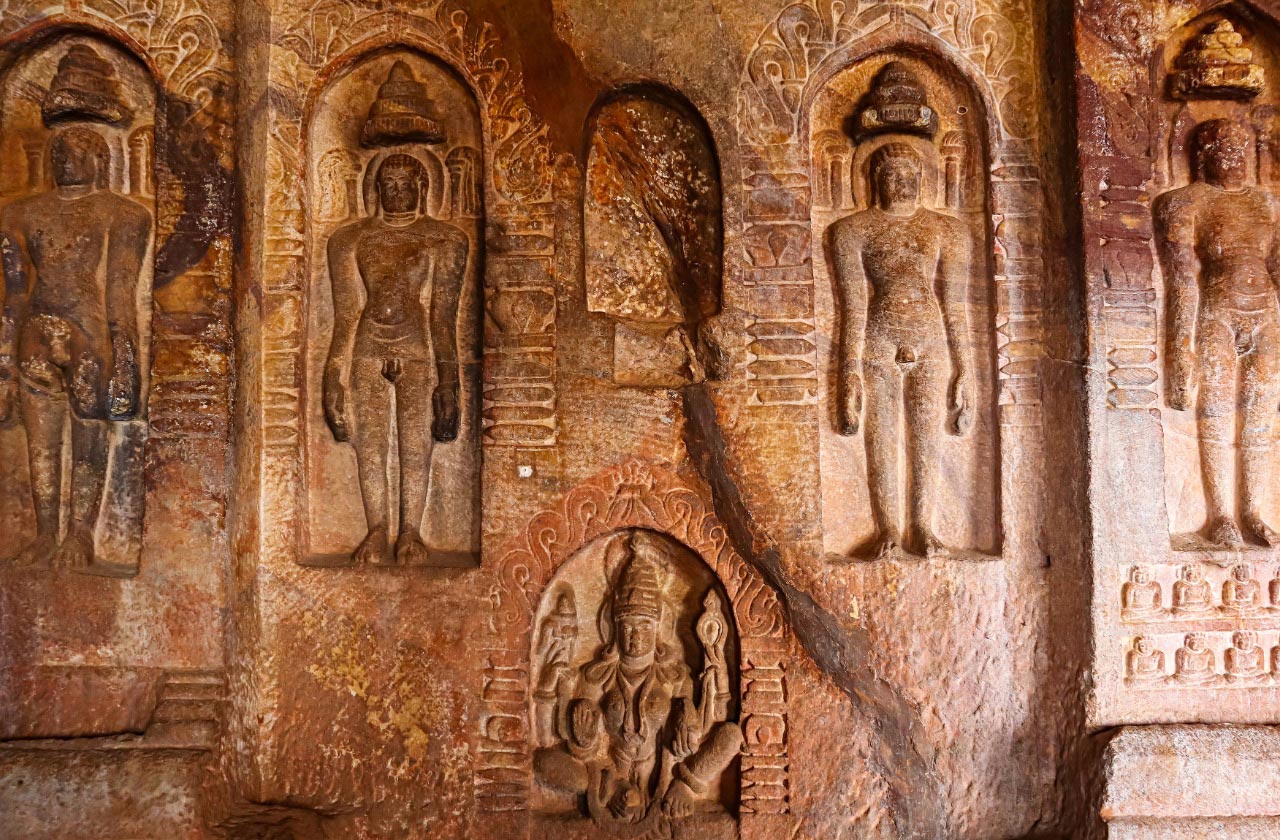
The Ellora caves are famous for their exciting artworks for many different religions. The caves are not dedicated to only one religion or culture. Instead, they consist of Hindu, Buddhist and Jain religions. The designated dates for these caves are between the 9th and 10th centuries. Some of the motifs that you will find in these caves are lotus motifs, carved pillars and shrines.
Manuscript Paintings and Miniatures in Jain Art
Jain artists sustained spiritual expression in the form of paintings as well. The illustration of Jain manuscripts is among the oldest surviving examples of Indian miniature art.
Illustration of the Kalpa Sūtra:
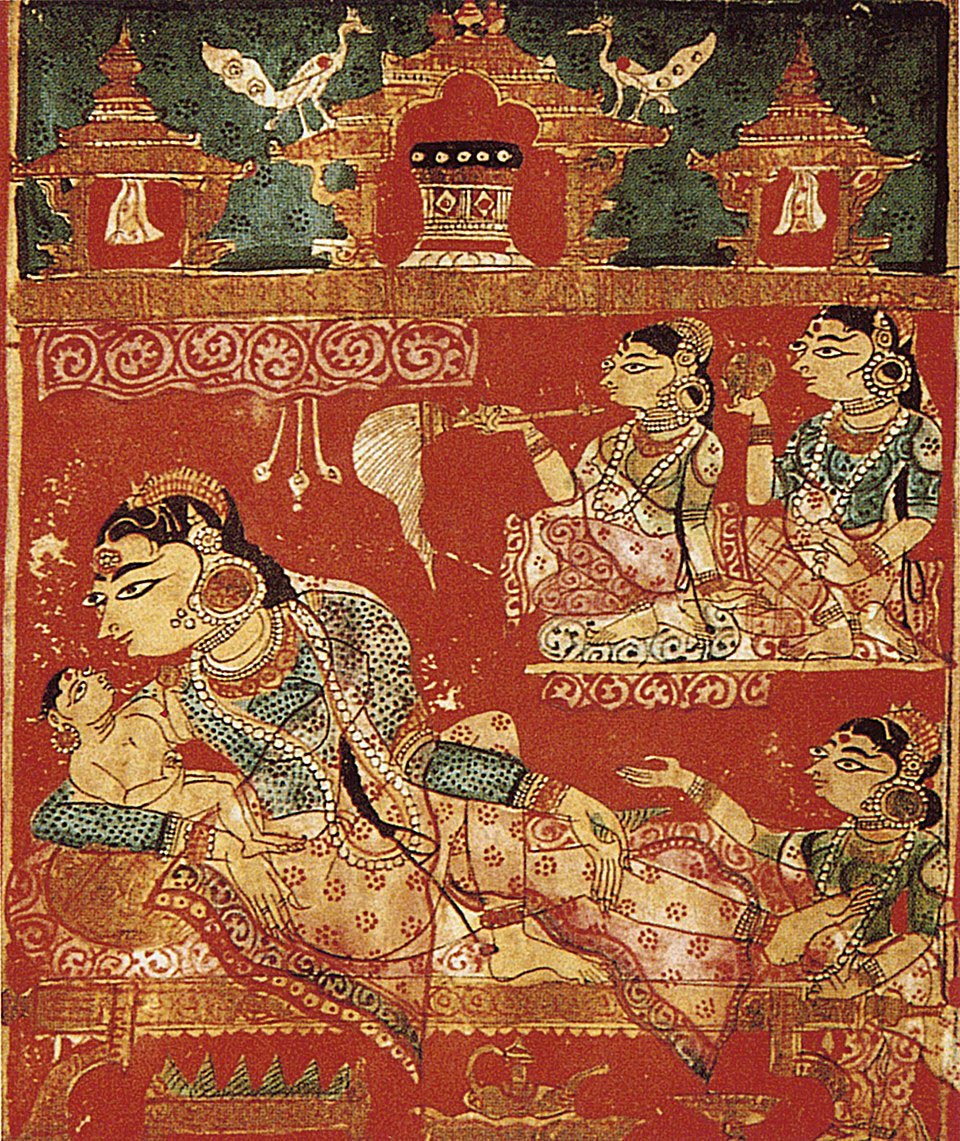
The Kalpa Sūtra is a sacred Jain text that is typically illustrated during a festival season and it is rich with hues of bright red, gold, and deep blue. The figures are depicted in a strongly stylized and flatter form with bold outlines, pronounced protruding eye forms, and symmetrical blocks of images — a systematic form that can be both symbolic yet representational.
Miniature Tradition in Western India:
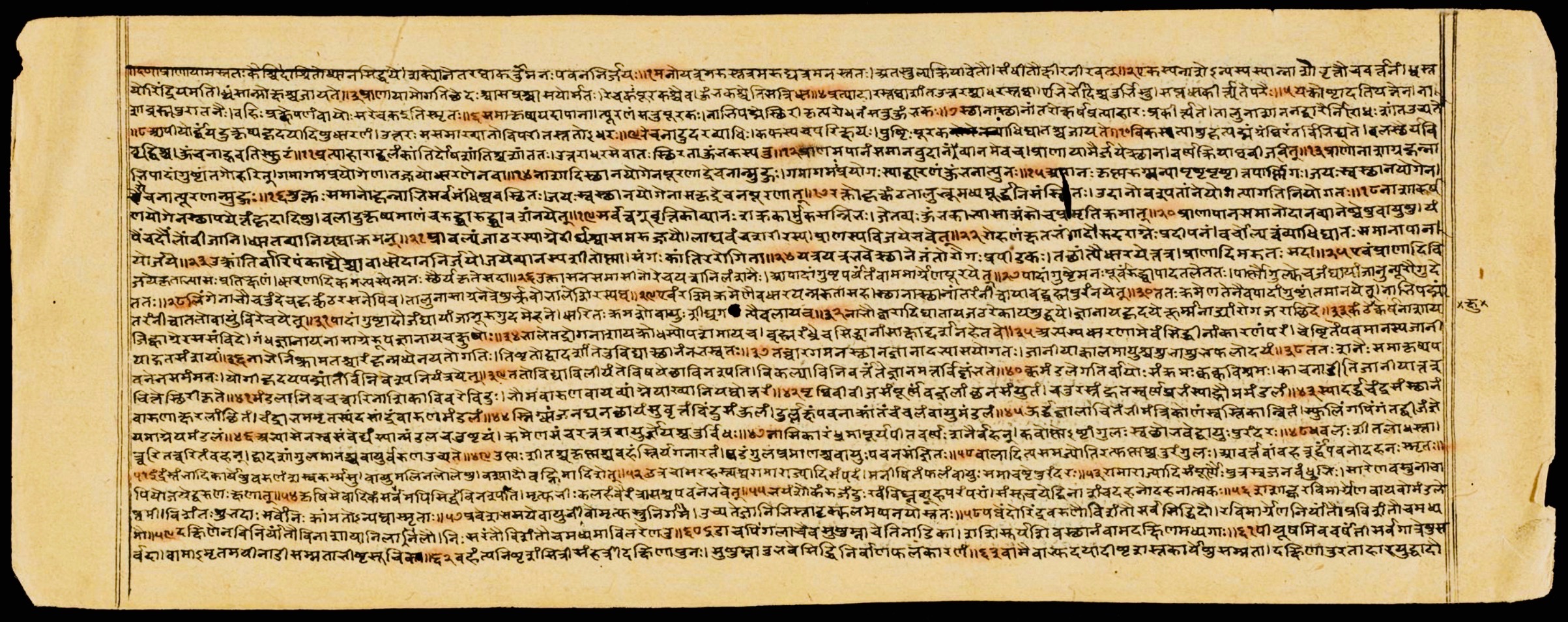
Between the 12th and 16th centuries, non-Islamic Gujarat and Rajasthan became important centers of the manuscript painting process. Jain merchants commissioned palm-leaf manuscripts that were hand-transcribed and illustrated, as well as manuscripts done on paper. The tradition, with its highly abstracted figures and play of jewel-like patterning of contrasting colors, foreshadows the later Rajput and Mughal schools of miniature painting.
Influences on Other Traditions:

Jain conventions of extended borders, symbolic color-set, and logical sequencing were especially influential on other Indian visual cultures. Indeed the elements of the Jain miniature legacy are present in the early Rajput painting modes as well as continuing to influence folkloric expression.
The Role of Jain Art in India’s Heritage
The contribution of Jain art encompasses far more than the role within a particular religion. Jain art has contributed, and continues to contribute, to India’s identity and culture in ways that are permanent.
Architectural Advancement:

Jain architects mastered marble carving, spatial symmetry, and architectural elegance. The Dilwara temples stands as a testament of the skills and mastery of the Jain archit cts. It is one of the finest stone-carved edifices in the world.
Influencing Indian Aesthetic:
The Jain community is known for serenity and symbolism. This is also true for other cultures of India. The Indian cultural landscape is a child of this serenity, among other cultural traits. The juxtaposition of Jain, Hindu, and Buddhist caves at Ellora represents an enduring ethos of shared spaces of worship in India.
Sustaining Values:
Jain art communicates more than monuments of stone; it also communicates two or intangible values, including non-violence, harmony, simplicity and restraint. The ideas of peace and spiritual discipline communicated by Jain art are just as relevant in a time often characterized by material excess.
Iconic Jain Art & Heritage Sites
| Site / Artwork | Significance |
|---|---|
| Dilwara Temples, Mount Abu | Renowned for exquisite white marble carvings, the Dilwara Temples represent the pinnacle of Jain architectural craftsmanship. |
| Ranakpur Jain Temple, Rajasthan | Famed for its 1,444 intricately carved marble pillars, each unique, the temple embodies Jain devotion and symmetry. |
| Shravanabelagola, Karnataka | Home to the 57-foot monolithic statue of Bahubali, symbolizing renunciation, meditation, and spiritual victory over desire. |
| Ellora Caves (Jain Section) | Rock-cut temples featuring intricate sculptures from the 9th–10th century, showcasing coexistence with Buddhist and Hindu art. |
| Kalpa Sūtra Manuscripts | Illuminated Jain texts adorned with rich hues and bold outlines, foundational to Indian miniature painting traditions. |
Conclusion
Jain art is not just an aesthetic tradition; it is not for aesthetics. Jainart has developed and grown into a form of spiritual meditation carved in stone, written on paper, and memorized in the mind. For example, the Bahubali statue has stood stable on the landscape to signify Jain practice and memory for thousands of years. Likewise, the brush strokes of Kalpa Sūtra manuscripts on paper, preserve the subtleties and affirmations of Jain life. Jainism holds a unique heritage for India with remarkable depth and breadth. The heritage keeps alive the cultures that once thrived and are still lineages in India. This culture is not only about what is physical, but also that they are intangible values that teach us. For example, Jain art has never failed in teaching compassion and peace. The art of cultures like Jainism is still alive, not just in art museums and history textbooks, but in our value system and respect for the art.
FAQs on Jain Art in Indian Heritage
